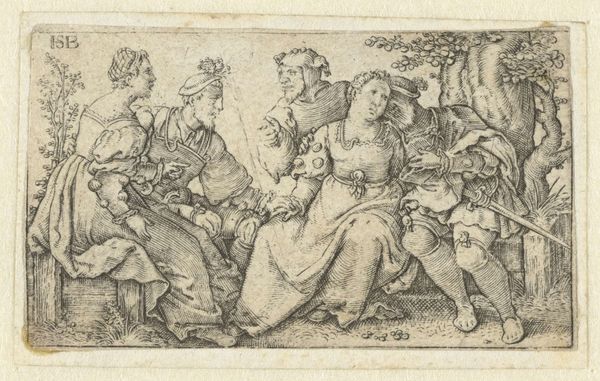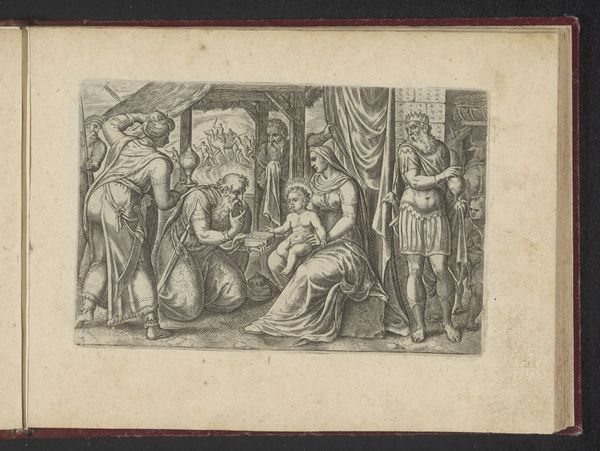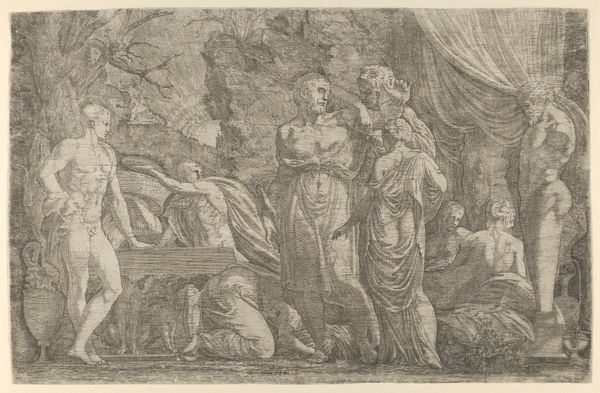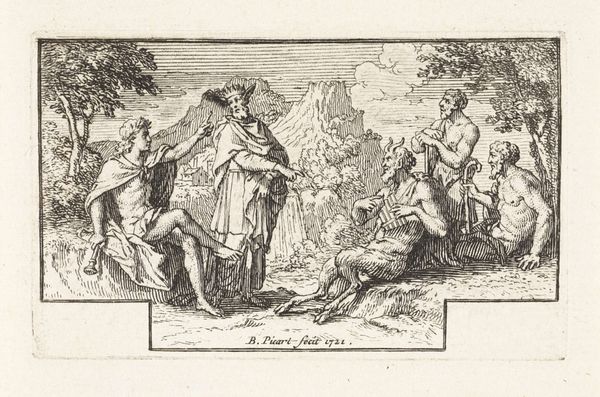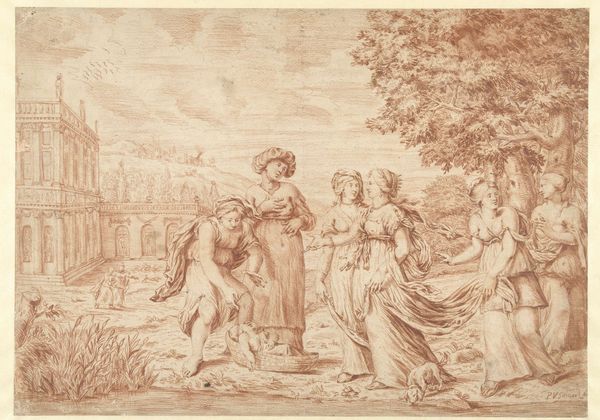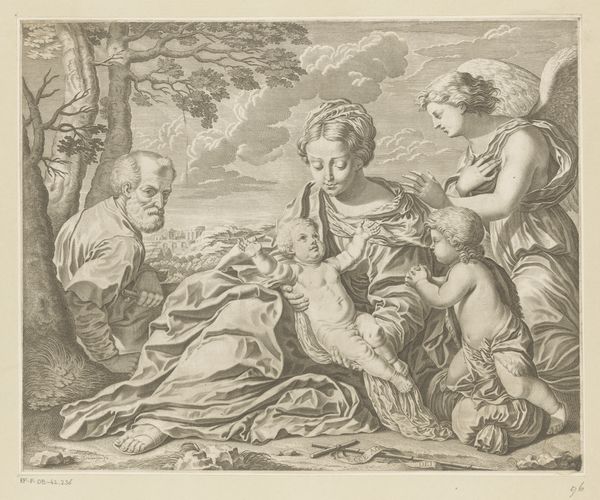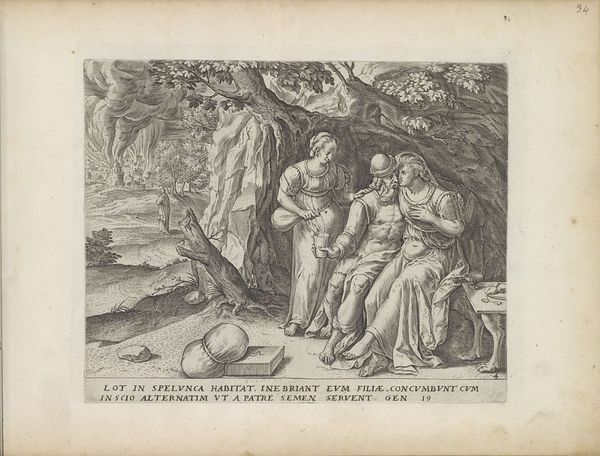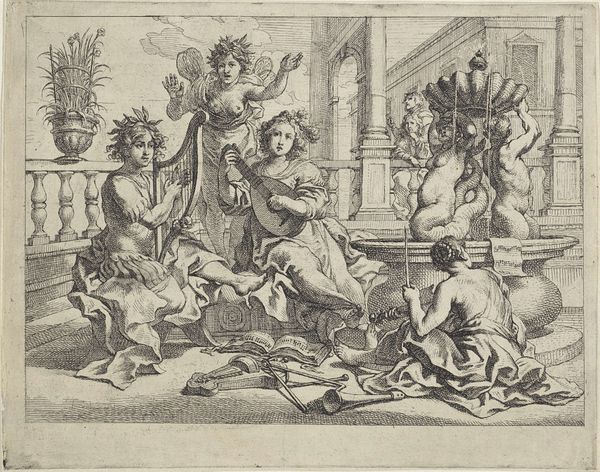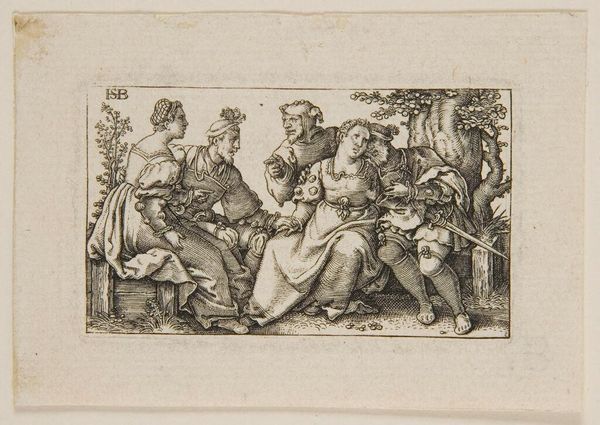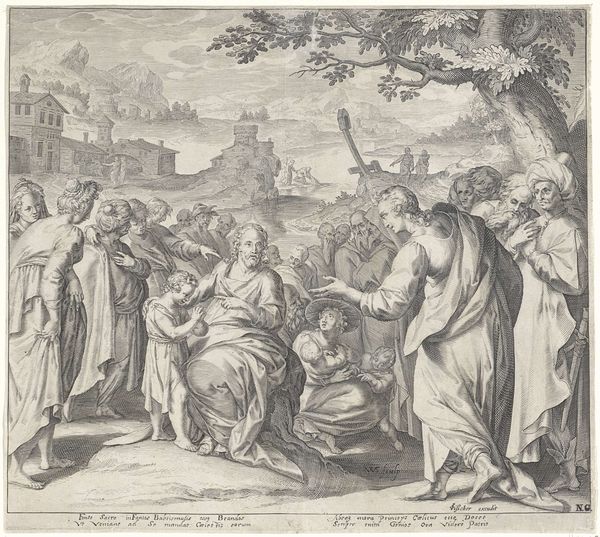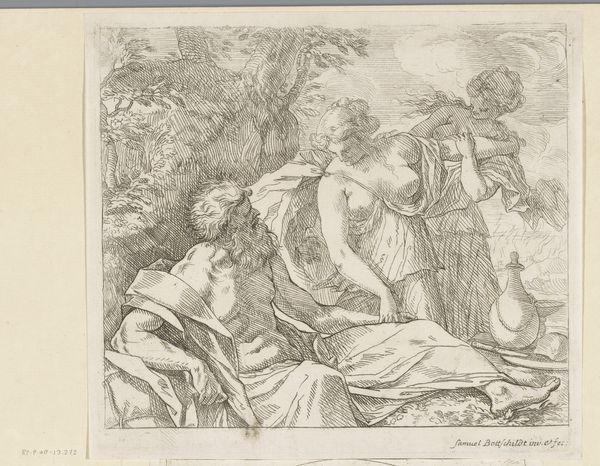
print, engraving
#
allegory
#
baroque
# print
#
figuration
#
genre-painting
#
engraving
Dimensions: height 97 mm, width 150 mm
Copyright: Rijks Museum: Open Domain
Curator: Immediately I see an array of meticulously engraved figures representing the seasons; the delicate lines hinting at a world steeped in allegory and Renaissance traditions. Editor: It feels quite academic and decorative, somehow cold. The sheer density of detail in the engraving speaks of skilled labor, of course, but also suggests it served a specific social function; perhaps to legitimize a patron's refined taste and world view. Curator: Indeed. What we're observing is "Personifications of the Four Seasons," an engraving dating from sometime between 1600 and 1676, created by Frederik Bouttats, currently residing in the Rijksmuseum. Each season is depicted as a figure embodying its characteristics. Spring with Flora, Summer with Ceres and Autumn with Bacchus. This depiction blends classical references and period ideologies. Note the fourth figure; winter with the character wearing fur-lined robes and warming by a fire. The choice of genre painting offers interesting possibilities for the identity politics of its time. Editor: Precisely! And consider how Bouttats employed specific engraving techniques; the dense crosshatching creates depth and texture but, ultimately, also acts as a mark of value. He is demonstrating his mastery, essential when access to costly pigments or complex compositions in oils might be restricted for broader consumption. Curator: It is not a singular composition. As it suggests identity, gender and race in the allegory figures. They all look a certain way... Do they provide enough representation to all communities. This engraving must be approached in its historical context. This image served a didactic purpose but could easily misrepresent. The use of classical allegory reinforces societal hierarchies that we need to re-evaluate today. Editor: I see it as more rooted in materials. I'm reminded that even 'high art' techniques rely on physical materials produced, distributed and accessed unevenly by the engravers in the process. This connects art making directly with the economic structures shaping art, both then and now. Curator: I appreciate how understanding these connections and implications offers a clearer comprehension, bringing past and present into alignment. Editor: Yes. It makes you wonder how such a display can inspire consideration for the current inequalities affecting art creation and dissemination.
Comments
No comments
Be the first to comment and join the conversation on the ultimate creative platform.
